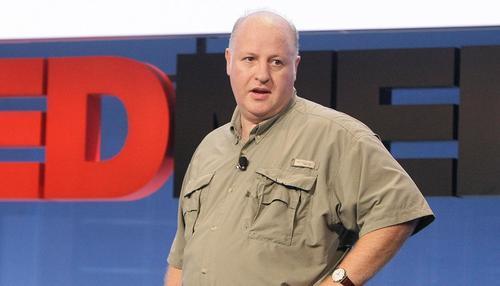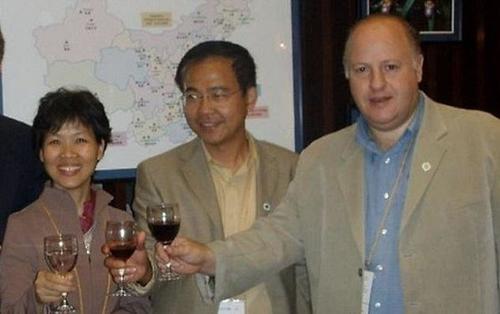Fauci’s NIAID Shielded Wuhan Bat Research Grant From Government Oversight
In 2017, a subagency of the National Institutes of Health (NIH) – headed by Dr. Anthony Fauci – resumed funding a controversial grant to genetically modify bat coronaviruses in Wuhan, China without the approval of a government oversight body, according to the Daily Caller.
For context, in 2014, the Obama administration temporarily suspended federal funding for gain-of-function research into manipulating bat COVID to be more transmissible to humans. Four months prior to that decision, the NIH effectively shifted this research to the Wuhan Institute of Virology (WIV) via a grant to nonprofit group EcoHealth Alliance, headed by Peter Daszak.

The first $666,442 installment of EcoHealth’s $3.7 million NIH grant was paid in June 2014, with similar annual payments through May 2019 under the “Understanding The Risk Of Bat Coronavirus Emergence” project.
Notably, the WIV “had openly participated in gain-of-function research in partnership with U.S. universities and institutions” for years under the leadership of Dr. Shi ‘Batwoman’ Zhengli, according to the Washington Post‘s Josh Rogin.
In 2017, however, the “Potential Pandemic Pathogens Control and Oversight (P3CO) Framework was formed within the Department of Health and Human Services (HHS),” which was tasked with evaluating the risks involved with enhancing dangerous pathogens, as well as whether proper safeguards are in place, before a grant into ‘gain-of-function’ or similarly risky research can be issued.
Fauci’s National Institute of Allergy and Infectious Diseases (NIAID) – the subagency which funded EcoHealth – didn’t think the grant needed review, and resumed their relationship with Daszak without flagging it for the P3CO committee, an NIH spokesperson told the Caller.

“This is a systemic problem,” says Rutgers University professor of chemical biology, Richard H. Ebright, referring to the loophole in the review process – and adding that NIAID and NIH have “systematically thwarted–indeed systematically nullified–the HHS P3CO Framework by declining to flag and forward proposals for review.”
The NIH, however, says that the grant wasn’t flagged for review because “NIAID determined research in the grant was not gain-of-function research because it did not involve the enhancement of the pathogenicity or transmissibility of the viruses studied,” the spokesperson told the Caller, adding: “We would not submit research proposals that did not meet the definition, because otherwise we would need to submit everything.”
We’ll just have to take their word for it, as the P3CO framework didn’t require the HHS review committee to take a second look at the NIAID’s claim that the EcoHealth grant doesn’t cover gain-of-function research.
More via The Daily Caller (emphasis ours)
How Federal Oversight Of Gain-Of-Function Research Is Bypassed
The Wuhan Institute of Virology (WIV) is at the center of widespread speculation that COVID-19 could have accidentally leaked from a lab into the human population. EcoHealth’s grant to study bat-based coronaviruses in China included the transfer of $600,000 to the WIV.
Had EcoHealth’s grant been subjected to P3CO review, an HHS panel would have independently evaluated the grant and, if necessary, recommended additional biocontainment measures to prevent potential lab leaks — or even recommended that the grant be denied entirely.
The WIV is a biosafety level 4 laboratory, the highest level biocontainment certification, but U.S. Embassy officials issued two diplomatic cables warning about inadequate safety at the lab after a visit in 2018. One of the cables warned that the lab’s work on bat-based coronaviruses represented the risk of a new SARS-like pandemic, according to The Washington Post.
An annex to the World Health Organization’s COVID-19 origin report released Tuesday describes the WIV’s work using “recombinant viruses” in tests involving bat coronaviruses, which Ebright said are descriptions of gain-of-function research.
The U.S. government paused funding of gain-of-function research in 2014 after lab workers were accidentally exposed to anthrax by the Centers for Disease Control, according to The New York Times. The incident came on the heels of widespread scientific outcry in 2011 when it was revealed that laboratories in Wisconsin and the Netherlands were intentionally modifying the H5N1 bird flu virus so it could more effectively jump between ferrets.
Federally funded gain-of-function research resumed in 2017 after new oversight procedures were implemented. The review framework split oversight responsibilities between two groups — the funding agency (the NIAID in the case of the EcoHealth grant) and the P3CO Review Committee, an interdisciplinary group convened by HHS.
The committee is responsible for recommending whether a research grant involving gain-of-function needs to include any additional risk mitigation measures, an HHS spokesperson told the DCNF. But the committee is kept in the dark on any grant until the funding agency flags one for its review.
The P3CO Framework doesn’t require the HHS review committee to take a second look at the NIAID’s determination following its review that the EcoHealth grant did not involve gain-of-function research.
The NIH spokesperson said it would be “misleading and inaccurate” to suggest NIAID was required to notify the HHS review committee of its determination.
An HHS spokesperson confirmed that the department’s P3CO Review Committee only reviews research grants that are flagged for additional review by funding agencies such as NIAID. The spokesperson did not answer when asked if the review committee had knowledge of the EcoHealth grant.
Ecohealth has a history of manipulating bat-based coronaviruses. The group’s president, Peter Daszak, said as much during a podcast interview filmed in Singapore just weeks before the first reported cases of COVID-19 in Wuhan in December 2019.
“You can manipulate them in the lab pretty easily,” Daszak said. “Spike protein drives a lot of what happens with the coronavirus. Zoonotic risk. So you can get the sequence, you can build the protein — and we work with Ralph Baric at [the University of North Carolina] to do this — and insert the backbone of another virus and do some work in the lab.”
Ebright told the DCNF that NIAID was wrong to determine that the EcoHealth grant did not involve enhancing the transmissibility of Chinese bat-based coronaviruses. He said the project’s abstract for the 2019 fiscal year, which referenced “in vitro and in vivo infection experiments” on coronaviruses, “*unequivocally* required risk-benefit review under the HHS P3CO Framework.”
Other scientists have said EcoHealth’s NIH-funded work in China involved gain-of-function research on bat-based coronaviruses.
“It is hard to overemphasize that the central logic of this grant was to test the pandemic potential of SARS-related bat coronaviruses by making ones with pandemic potential, either through genetic engineering or passaging, or both,” Drs. Jonathan Latham and Allison Wilson wrote in June.
The NIH terminated the EcoHealth grant in April 2020. NIH deputy director for extramural research, Michael Lauer, told the group in a letter that the agency “does not believe that the current project outcomes align with the program goals and agency priorities.”
Fauci said during a hearing before the House Energy & Commerce Committee in June that the EcoHealth grant was canceled “because the NIH was told to cancel it.”
“I don’t know the reason, but we were told to cancel it,” Fauci said.
Fauci told Politico following the hearing that former President Donald Trump’s White House ordered the NIH to cancel the grant.
* * *
Read the rest of the report here.
Tyler Durden
Tue, 04/06/2021 – 17:05![]()
Zero Hedge’s mission is to widen the scope of financial, economic and political information available to the professional investing public, to skeptically examine and, where necessary, attack the flaccid institution that financial journalism has become, to liberate oppressed knowledge, to provide analysis uninhibited by political constraint and to facilitate information’s unending quest for freedom. Visit https://www.zerohedge.com
